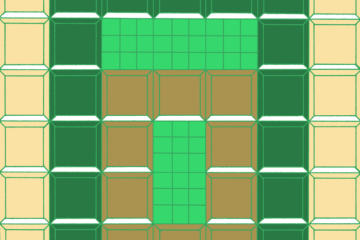A tribute to Hildreth Meiere (1892 – 1961)…
I am a fan of Hildreth Meiere–as I’m sure are many Nebraskans, because of her work on their statehouse–but I’m not sure how many know her work. Perhaps you may know her as the artist who did the medallions on the façade of Radio City Music Hall. If you haven’t heard of her, she is famous for world-class art deco mosaics. Meiere worked in transparent glass (influenced by Tiffany) and metallics (gold alloyed with silver, copper, etc.) in different sizes to create stunning murals in what is known as the “ravenna mosaic style,” so named for the Ravenna Mosaics artisans who laid the mosaic tesserae.
Hildreth had an interesting career path, studying art in Florence as a teen and then becoming a mapmaker in the US Navy at the end of World War I. She was fortunate enough to get a patron in 1919 with the architect Bertram Goodhue, and the rest, as they say, is history. Her first and foremost talent was for arranging color and scale in large decoration. One of her favorite materials was “brecciated Deerco rouge marble,” which added color and dimension to her work. She grew to great prominence and had a long career. In early 1928, The New York Times called her work ”rich in decorative quality, with a robust force and initiative,” and by 1956, she was awarded a fine arts medal from the American Institute of Architects.
To create these vibrant mosiacs, she worked in color studies in drawings and on architecture models. She then blew up the drawings to make “full-size working drawings and laid the paper on the wall with the tiles facing a cement bond. After it was firm, the paper was washed away, then the tiles were grouted with dark blue on the walls and black grout on the ceiling (American Art Deco / Carla Breeze (2003) p28).”
Some say her best example is the Irving Trust Company at One Wall Street, NYC (1932).
In honor of Meiere, I’ve been playing with mosaic tiles lately.


